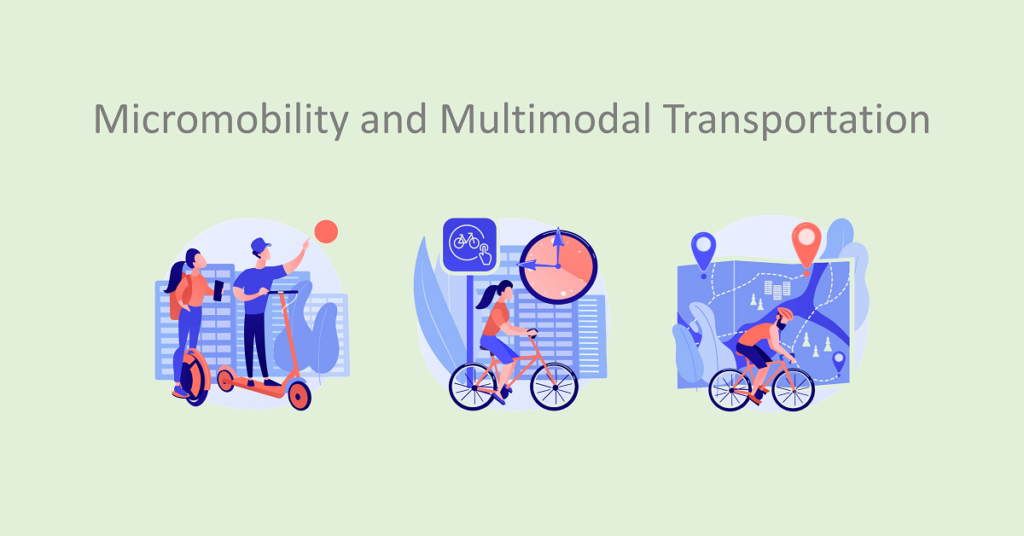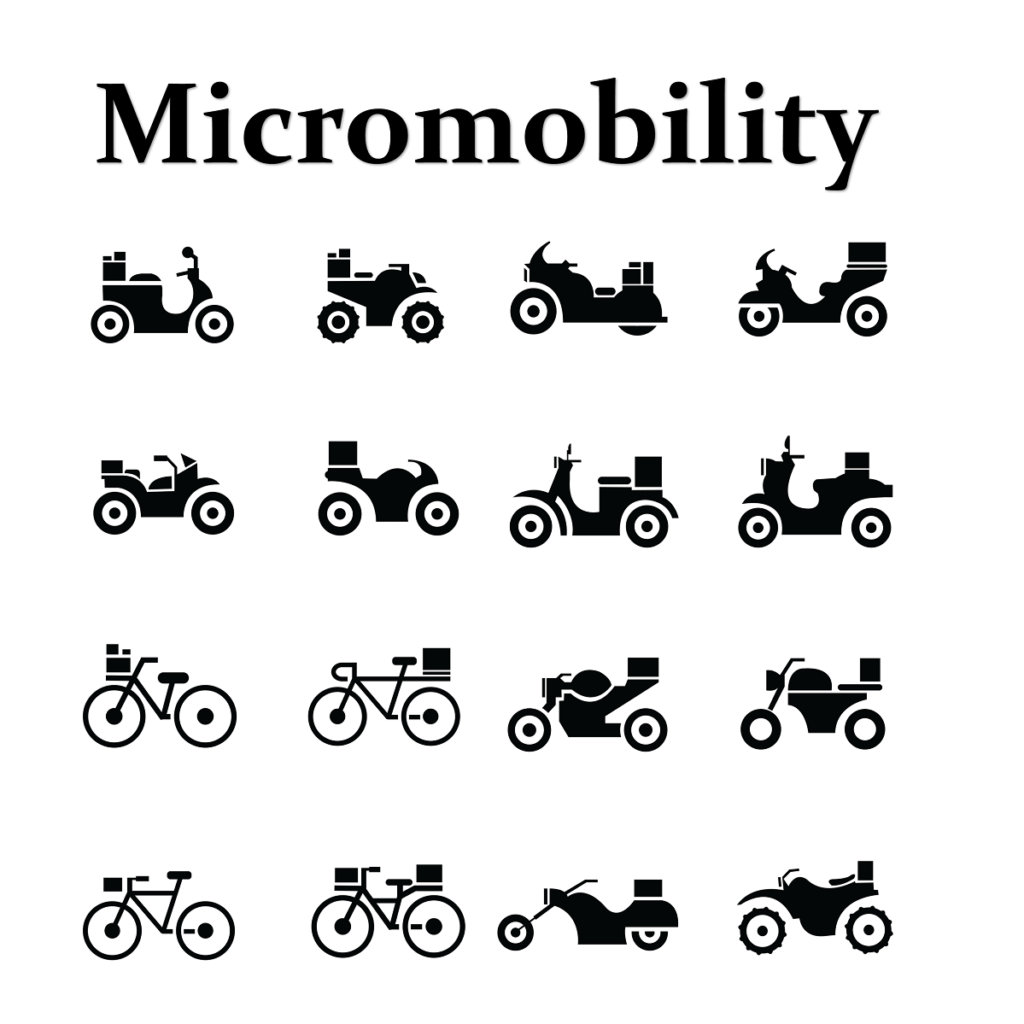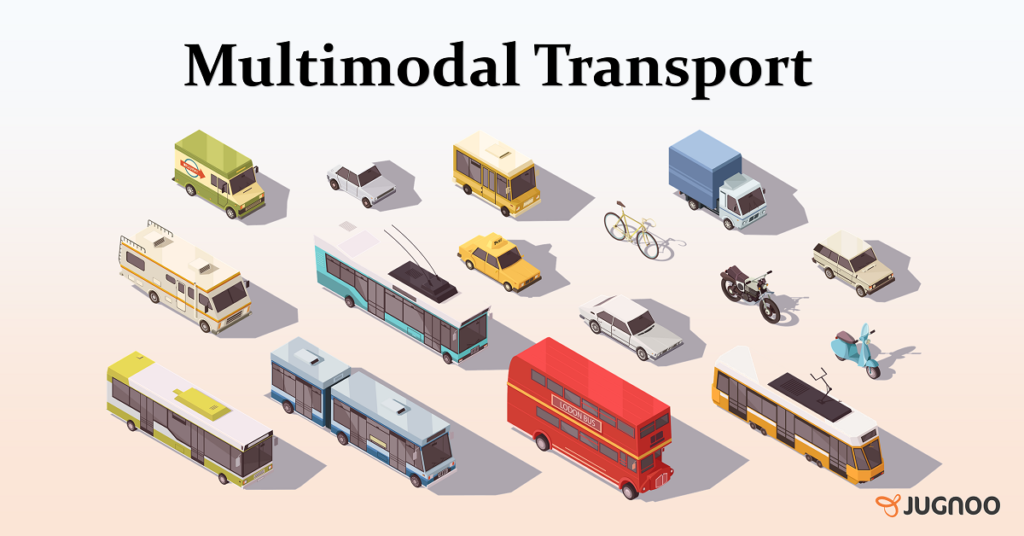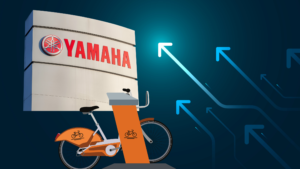Micromobility and Multimodal transport- How far it can go?
Micromobility is solving transportation problems in urban spaces and cities. As different societies take steps towards micromobility it is becoming the need of the hour, also general masses leaning more towards greener solutions.
- Micromobility
- Advantages of Micromobility
- Future
- Multimodal Transport
- Advantages of Multimodal Transport
- Future
- Conclusion

Micromobility
Micromobility technology is a category of lightweight transportation designed for individual use. This includes electronic scooters, e-bikes, traditional bicycles and scooters, Segways, electric skateboards, electric water bikes, and hoverboards. The major focus remains on personal transport for passenger trips of shorter distances. City dwellers who are willing to use more ecological and economical means of travel are increasingly being drawn to micromobility technology. Today, big tech companies like Microsoft, Amazon, Google and Apple are jumping on the bandwagon by creating the software tools and cloud services required to support personal and shared micromobility start-ups.
Advantages of Micromobility
Micro Mobility has many practical draws that are helping to boost this industry. Let us look at the advantages it offers.
- Cheaper Mode Of Travel: The charges are quite cheap as compared to the traditional transportation modes and cab services. It costs just a few dollars to book rides on e-bikes and scooters. Thus cheaper rates is one of the biggest reasons for its growth.
- Fast And Easy: Riding an e-bike or a scooter does not require any special skill, right? Moreover, short rides on scooters are more fun along with being quick and easy. It’s also much faster to navigate the traffic on congested roads on a bike than on a car
- Eco-Friendly: Environment friendliness is one of the most significant factors for the popularity of micromobility. Creating a win-win situation by not depending on fossil fuel but relying on clean energy and creating no pollution.
- Last Mile Transport: This has always remained a challenge in urban spaces. Shared mobility has emerged as a boon, providing one of the cheapest and fastest ways of reaching from point A to point B.
- Smart Cities: While masses are becoming more conscious about saving the planet more and more energy-efficient and green initiatives are coming into place. Smart cities are increasingly adopting e-bikes and scooters thus contributing significantly to the spread of micromobility.
Electronic devices make micromobility more attractive to people who may not use traditional transport modes, the area riders can travel easily without a car thus increasing access to public transport.

Future
The COVID-19 pandemic has affected millions of people and businesses around the world. Blow to micromobility came as this industry was accelerating. The number of passenger-kilometer travelled decreased 50 to 60% worldwide.
So is there good news ahead?
Yes. The micromobility sector is expected to make a strong post-pandemic recovery. With cities offering greater support for biking, consumer behaviour is shifting rapidly. In response to the control measures for the COVID-19 pandemic, the local travel preferences are quickly changing.
Let us see what the data shows. According to a US micromobility company that rents e-scooters, average trip distances have grown 26% since the start of the pandemic, with rides in some cities, such as Detroit, increasing by up to 60%. At a more detailed level, some cities are also experiencing a shift in consumer use cases. For instance, in San Francisco, the lockdown has caused a pronounced shift toward runs to the pharmacy and trips to restaurants to pick up food.
One major result is an increased focus on bicycle lanes. Let us see what initiatives countries are taking around the world for the same.
- Milan has announced that 35 kilometers of streets will be converted to cycling lanes previously used by cars.
- Paris plans to invest $325 to update its bicycle network by converting 50 kilometers of lanes usually reserved for cars
- Brussels plans to turn 40 kilometers of car lanes into cycle paths whereas Montreal announced the creation of more than 320 kilometers of new bicycle paths across the city.
- Seattle has permanently closed 30 kilometers of streets to most vehicles, providing more space for e-bikes
The micromobility market is expected to grow to $300 billion by 2030 in the USA alone. Micro Mobility startups have already pumped in $5.7 billion into the industry and looking to capture new cities and urban spaces around the world.
So the micromobility is moving towards its recovery and the next normal. A Mckinsey survey report shows that the number of respondents willing to use micromobility in the next normal regularly will increase by 9% for private micromobility and by 12% for shared micromobility compared to pre-crisis levels. Given these trends, the private and shared micromobilty solutions will experience complete recovery in the numbers of passengers and kilometers travelled.

Multimodal Transport
Multimodal transport is a combination of several shipping modes available to move goods and cargo around the world. In layman terms to transport the goods to their final destination, shippers need to combine transport modes while all of their freight movements are handled under a unified bill of lading, even if different carriers are moving it. And not just the transport of goods but the public commuters too who take several modes to reach their destination, say, to the office.
Advantages of Multimodal Transport
Multimodal transport benefits many businesses that usually ship large amounts of freights regularly. It requires less time and effort. All the shipments are under a single bill and are usually managed by some external agency. Let us look at some factors contributing to its popularity.
- Time and cost efficient: Since one shipping provider handles all your included transits, you just have to communicate to a single company. This ensures less worrying and quick shipments. An easier logistics coordination saves you amounts of money
- Use of International experience: Not just in the field of transport as you get to use expertise international shippers but also in the field of bureaucracy and commerce.
- Easier communication: When you use multimodal transport, your concerned company handles all your updates, delays and other interactions through a single provider and contract. When you have one person responsible for the entire transportation chain you focus more on business rather than bouncing on calls.
- Faster transit options: Different regions across the world incorporate different regulations over vehicles and drivers. In the multimodal transportation space, you are not limited to a single transport mode i.e your company can use several options. This ensures more flexibility and on-time customer deliveries.
- Reduced Risks: Those businesses involving frequent transportation of goods know well the risks of damaged goods. It occurs mostly because it has to be transported through different brokers and channels. Multimodal gives you relief here by incorporating their transport carrier links throughout the world.

Future
The question comes forward. How far can it go? While the future possibilities are endless. Let us look at the present scenario. In most cities today there are several ways to make the same trip. A commuter might begin the day with a car share to work, take a bike share to the grocery store and finish off the night in a taxi. A complete multi-modal solution could help simplify and streamline this, however, by providing clearer choices and making how different solutions can be combined more explicit. Creating a network of linked transportation options along a direction of travel would allow commuters to truly think about alternative solutions and even consider abandoning vehicle ownership. In fact, some estimate that 90% of personal vehicles in the United States could be eliminated by a fully integrated multi-modal transit network!
Learn how MaaS is redefining multimodal transportation.
The future of multi-modal transportation heavily depends on bringing disparate services under one umbrella and allowing users to fully plan and pay for their trips on the fly. Autonomous vehicles also have a much larger role to play, thanks to the IoT, to make things a lot easier.
In the end, the ideal mode of transportation for any commute depends on the nature of the journey, how long? to where? etc.
As cities grow and technology improves, multimodal transport will increasingly look like the only viable solution. By leveraging big data and integrating existing modes of transport, multimodal solutions will allow us to move the largest number of people in the most efficient manner possible.
Conclusion
Keeping the most important factors of cost and time saving the multimodal transport is a thing for every concerned business to adopt.
The business goals aligned towards environment safety along with achieving profits with greener means are certainly going to contribute a lot to these two industries.
You can launch your micromobility multimodal transportation system in a week. Contact team Jugnoo and get your 14 days free trial today!






